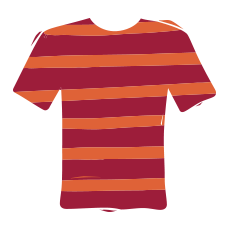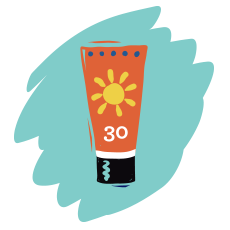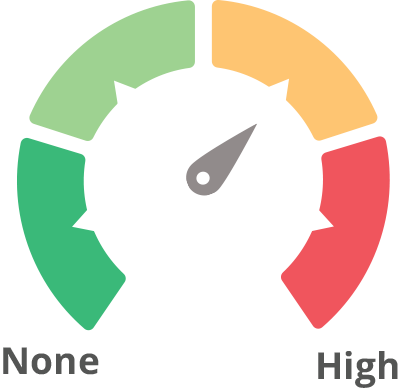

Please note that EWG obtains the displayed images of products from third parties and that the product's manufacturer or packager may change the product's packaging at any point in time. Therefore, EWG assumes no responsibility for the accuracy of images presented.
Close

EWG assumes no responsibility for the accuracy of images presented.
Sunscreens can break down while still in the bottle. To be safe dispose of products when the mixture clumps or separates.
This product contains chemical active ingredient(s) that the FDA does not have enough health safety data to classify as safe and effective: AVOBENZONE, HOMOSALATE, OCTISALATE, OCTOCRYLENE







Ingredients from label Active Ingredients: Avobenzone 3.0%, Homosalate 15.0%, Octisalate 5.0%, Octocrylene 10.0%; Inactive Ingredients: WATER, BUTYLOCTYL SALICYLATE, STYRENE/ACRYLATES COPOLYMER, POTASSIUM CETYL PHOSPHATE, BENZYL ALCOHOL, SILICA, GLYCERYI STEARATE, PEG-100 STEARATE, DIMETHICONE, CAPRYLYL GLYCOL, SYNTHETIC BEESWAX, ETHYLHEXYLGLYCERIN, ACRYLATES/C12-22 ALKYL METHACRYLATE COPOLYMER, BEHENYL ALCOHOL, FRAGRANCE, XANTHAN GUM, CHLORPHENESIN, DIMETHICONE/PEG-10/15 CROSSPOLYMER, HYDROLYZED JOJOBA ESTERS, DISODIUM EDTA, SODIUM POLYACRYLATE, ETHYLHEXYL STEARATE, BHT, JOJOBA ESTERS, TRIDECETH-6
Concerns: Allergies/immunotoxicity (high), Endocrine disruption (moderate), Non-reproductive organ system toxicity (moderate), Ecotoxicology (low), Irritation (skin, eyes, or lungs) (moderate)
Concerns: Allergies/immunotoxicity (high), Use restrictions (moderate), Non-reproductive organ system toxicity (moderate), Occupational hazards (high)
Concerns: Allergies/immunotoxicity (low), Enhanced skin absorption, Use restrictions (moderate), Endocrine disruption (low), Biochemical or cellular level changes (high)
Concerns: Cancer (low), Developmental/reproductive toxicity (low), Use restrictions (high), Endocrine disruption (low), Irritation (skin, eyes, or lungs) (low)
Concerns: Cancer (moderate), Developmental/reproductive toxicity (low), Allergies/immunotoxicity (high), Endocrine disruption (low), Non-reproductive organ system toxicity (moderate), Irritation (skin, eyes, or lungs) (moderate)
Concerns: Enhanced skin absorption, Use restrictions (moderate), Endocrine disruption (low), Non-reproductive organ system toxicity (moderate), Ecotoxicology (low), Contamination concerns (SALICYLIC ACID and TRIMETHYLCYCLOHEXANOL)
Concerns: Use restrictions (moderate), Persistence and bioaccumulation (high), Non-reproductive organ system toxicity (moderate), Ecotoxicology (low)
Concerns: Allergies/immunotoxicity (moderate), Use restrictions (moderate), Persistence and bioaccumulation (moderate), Non-reproductive organ system toxicity (low), Irritation (skin, eyes, or lungs) (moderate)
Concerns: Non-reproductive organ system toxicity (low), Contamination concerns (ETHYLENE OXIDE and 1,4-DIOXANE)
Concerns: Non-reproductive organ system toxicity (low), Contamination concerns (ETHYLENE OXIDE and 1,4-DIOXANE)
Concerns: Cancer (low), Allergies/immunotoxicity (low), Use restrictions (moderate), Endocrine disruption (low), Contamination concerns (BENZOIC ACID, 4-T-BUTYLBENZOIC ACID, BENZALDEHYDE, P-ANISIC ACID, ACETOPHENONE, and DIBENZOYLMETHANE)
Concerns: Allergies/immunotoxicity (low), Use restrictions (moderate), Persistence and bioaccumulation (low), Ecotoxicology (low), Irritation (skin, eyes, or lungs) (low), Biochemical or cellular level changes (high)
Concerns: Use restrictions (low), Contamination concerns (METHACRYLIC ACID, ACRYLIC ACID, and 2-ETHYLHEXYL ACRYLATE)
Concerns: Allergies/immunotoxicity (low), Non-reproductive organ system toxicity (moderate), Ecotoxicology (low), Irritation (skin, eyes, or lungs) (high)
Concerns: Use restrictions (low), Non-reproductive organ system toxicity (moderate), Multiple, additive exposure sources (low), Contamination concerns (ACRYLIC ACID)
Concerns: Use restrictions (low)
Concerns: Cancer (moderate), Use restrictions (low), Persistence and bioaccumulation (high), Non-reproductive organ system toxicity (low), Irritation (skin, eyes, or lungs) (low)
Concerns: Use restrictions (low), Irritation (skin, eyes, or lungs) (low)
Concerns: Allergies/immunotoxicity (low), Non-reproductive organ system toxicity (low), Irritation (skin, eyes, or lungs) (low)
Concerns: Enhanced skin absorption
Concerns: Use restrictions (low), Irritation (skin, eyes, or lungs) (moderate)
Concerns: Use restrictions (low), Non-reproductive organ system toxicity (moderate), Irritation (skin, eyes, or lungs) (low)






UVA/UVB Balance

EWG's estimate of the UV protection provided by this product. An ideal sunscreen filters UVA and UVB rays evenly, but some sunscreens let too many UVA rays through.
Close